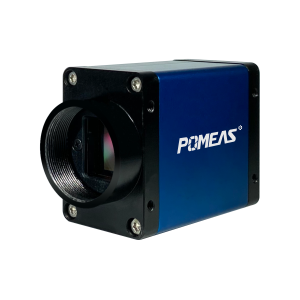Line Scan Camera Principle:
Line Scan Camera through a linear sensor, along the direction of movement of the object to be detected to scan continuously. This technique divides a complete image into multiple lines, which are scanned and captured line by line, eventually synthesizing a complete image. A line scan camera is mainly composed of a lens, an image sensor (e.g. CCD or CMOS), a scanning control circuit and a power supply. The lens is used to project the image onto the image sensor, the image sensor receives the projected image and converts it into an electrical signal, the scanning control circuit controls the scanning speed and direction, and the power supply provides the electrical energy needed for the camera to work properly.
The main features of line scan cameras:
- High resolution: due to the progressive scanning method, line scan cameras can obtain high-resolution images.
- Stable speed: By controlling the scanning speed and direction, the line scan camera can realize stable image acquisition speed.
- Good flexibility: Line scan cameras can be used with various types of lenses and sensors, providing good flexibility.
Principle of the surface-array camera:


An Area Scan Camera, on the other hand, consists of a fixed array of pixels in a fixed row, with each pixel unit capable of capturing an image simultaneously. It captures the entire image area at once and is suitable for static or slow-moving applications. When light enters the camera, it passes through the lens into the camera's optical system, which focuses the light on the sensor array so that the sensor can capture as much light as possible. The sensor array is the most important component of a surface array camera and consists of millions of pixels, each of which captures information about the intensity and color of the light.
Key features of a face array camera:
- High Resolution: Face array cameras typically have higher resolution because they have more pixel units and are able to capture more detail in static or slow moving scenes.
- High sensitivity: Face-array cameras have high sensitivity for better image quality even under lower lighting conditions.
- Insensitivity to motion: Compared to line-scan cameras, surface-array cameras are relatively insensitive to object motion, allowing them to effectively capture both stationary and slow-moving objects.


Application Scenarios:
Line scan cameras have a wide range of applications in machine vision, medical imaging, geographic information systems and security monitoring.
Face array camera applications: face array cameras are widely used in a variety of occasions that require high-quality image acquisition, such as 3C manufacturing, food and drug production, express logistics, printing and textile, automotive manufacturing, new energy and other industries.
Differences between the two
Working Principle: Line scan cameras scan the image line by line through the linear sensor, while the surface array camera captures the whole image at the same time through a fixed array of pixels.
Resolution and Speed: Line scan cameras have high resolution and high-speed scanning capability in the horizontal direction, which is suitable for high-speed moving object detection; while surface array cameras have higher overall resolution, which is suitable for static or slow-moving application scenarios.
Sensitivity and motion sensitivity: the surface array camera in the lower light conditions can also obtain better image quality, and relatively insensitive to the movement of the object; line scanning camera is more sensitive to the object's movement speed and direction, the need for motion compensation.
Application areas: line scan cameras are widely used in machine vision, medical imaging, geographic information systems and security monitoring, etc.; face array cameras are more suitable for high-quality image acquisition needs of manufacturing and logistics industries.
Product recommendation
TECHNICAL SOLUTION
MORE+You may also be interested in the following information
FREE CONSULTING SERVICE
Let’s help you to find the right solution for your project!


 ASK POMEAS
ASK POMEAS  PRICE INQUIRY
PRICE INQUIRY  REQUEST DEMO/TEST
REQUEST DEMO/TEST  FREE TRIAL UNIT
FREE TRIAL UNIT  ACCURATE SELECTION
ACCURATE SELECTION  ADDRESS
ADDRESS Tel:+ 86-0769-2266 0867
Tel:+ 86-0769-2266 0867 Fax:+ 86-0769-2266 0867
Fax:+ 86-0769-2266 0867 E-mail:marketing@pomeas.com
E-mail:marketing@pomeas.com
